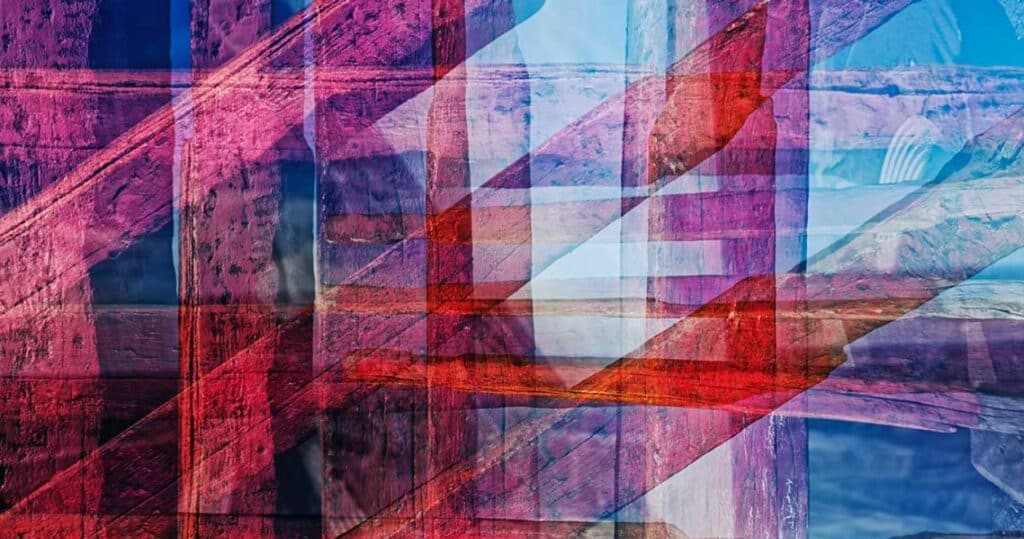Hi there! I’d like to talk about the interesting world of famous surrealist artists today. The art trend known as surrealism began in the early 1900s. It is known for exploring the unconscious mind, dreams, and putting together things that don’t seem to go together. This movement really tests the limits of what we think is possible in art and in how we see the world.
A few names come to mind right away when I think of famous surrealist artists. We start with Salvador Dali. Dali, the melting clock and weird dreamscape maestro. He is famous in Surrealism. René Magritte’s visuals test viewers’ reality perceptions. Magritte’s unusual uses of everyday objects are captivating. Joan Miró is another Surrealist icon.
His quirky, colourful style used bright colours and abstract patterns to draw spectators into his imagination. Last but not least, Max Ernst’s unconventional methods challenged traditional art. That’s all there is to say about some of the most famous surrealist artists. Stay tuned as we go into more detail about their fascinating works and the strange settings they made.
Keep Exploring: 10 Famous Inspiring Artists Overcoming Adversity
10 Surrealist Artists You Need to Know About
These ten painters have made an unmistakable impression on the world of surrealism, each adding a distinct viewpoint and artistic vision to the movement, influencing the path that the history of art will take and inspiring future generations of artists.The following is a list of ten Surrealist artists that you should be familiar with:
Salvador Dalí (1904–1989)

About Him:
- Born: 1904 in Figueres, Spain
- Died: 1989 in Figueres, Spain
- Education: Royal Academy of Fine Arts of San Fernando
- Spouse: Gala Dalí
- Known for: Eccentricity, melting clocks, surreal landscapes.
Salvador Dalí, born in 1904 in Figueres, Spain, was a prominent Surrealist artist. Dalí, known for his unique manner, depicted surreal landscapes, melting clocks, and odd symbols in his paintings. Freudian thought influenced his art, which explored the subconscious and illogical.
His most renowned picture, “The Persistence of Memory,” explores time and perception. In addition to painting, Dalí contributed to Surrealism in sculpture, film, and fashion. His eccentricities, like as his moustache and mannerisms, made him a 20th-century cultural legend.
René Magritte (1898–1967)

About Him:
- Born: 1898 in Lessines, Belgium
- Died: 1967 in Brussels, Belgium
- Known for: Bowler-hatted men, surrealism in everyday objects, “This is not a pipe” painting.
René Magritte, born in Belgium in 1898, is known for his puzzle-provoking surrealist art. His paintings often place everyday objects in unusual situations, challenging reality. His iconic piece, “The Treachery of Images,” portrays a pipe with the phrase “Ceci n’est pas une pipe” (This is not a pipe), questioning representation and reality.
Magritte’s painstaking technique, attention to detail, and innovative ideas made him a surrealist icon. His legacy inspires artists and philosophers, affecting 20th-century and beyond art and perception conversation.
Max Ernst (1891–1976)

About Him:
- Born: 1891 in Brühl, Germany
- Died: 1976 in Paris, France
- Known for: Frottage, grattage techniques, dreamlike imagery.
Max Ernst (1891–1976) was a key Surrealist figure known for his inventive methods and startling images. Ernst, from Germany, painted, sculpted, and collaged. He created surprising, dreamy creations using frottage, rubbing pencil or chalk over paper on rough surfaces.
His fascination in psychology and the unconscious led to weird and magical scenarios. Ernst’s paintings explored symbolic storytelling and the subconscious, challenging reality. Artists and thinkers on human nature are still inspired by his Surrealist work.
Joan Miró (1893–1983)

About Him:
- Born: 1893 in Barcelona, Spain
- Died: 1983 in Palma de Mallorca, Spain
- Known for: Playful symbols, biomorphic forms, use of bright colors.
Surrealist pioneer Joan Miró was born in Barcelona in 1893. Miró’s colourful, dreamlike works featured organic shapes, vibrant colours, and inventive formations. He explored the subconscious and surreal to break from traditional painting.
Due to his Catalan origin and folk art passion, Miró’s art generally evoked childish wonder and freedom. Famous works include “The Tilled Field” and “The Birth of the World.” Miró’s Surrealist innovations made him one of the 20th century’s most influential artists.
Leonora Carrington (1917–2011)

About Him:
- Born: 1917 in Clayton-le-Woods, Lancashire, England
- Died: 2011 in Mexico City, Mexico
- Known for: Magical realism, feminist themes, mythological imagery.
Leonora Carrington (1917–2011), a notable Surrealist artist, explored the subconscious and surreal imagination in her fanciful and mysterious works. Born in England, she bucked social standards in her personal and artistic life.
Carrington painted surreal landscapes with mythical animals, hybrids, and allegorical symbols. Her work included folklore, mythology, and alchemy, expressing her interest in the mysterious and mystical. Carrington was one of Surrealism’s most influential female painters. Surrealist artists and fans are still inspired by her.
Dorothea Tanning (1910–2012)

About Him:
- Born: 1910 in Galesburg, Illinois, USA
- Died: 2012 in New York City, USA
- Known for: Surrealist paintings, soft sculpture, exploration of the subconscious.
Dorothea Tanning (1910–2012), an American surrealist, created mysterious and dreamy works. Born in Galesburg, Illinois, she studied fashion illustration before painting. Tanning’s art explores sexuality, latent impulses, and human psychology.
Over time, her style went from creepy to whimsical to magical. Poet and autobiography writer Tanning published “Birthday” in 1986. She exhibited internationally during her career, being known for her unique surrealism contributions and establishing a legacy in art.
Meret Oppenheim (1913–1985)

About Him:
- Born: 1913 in Berlin, Germany
- Died: 1985 in Basel, Switzerland
- Known for: Object art, “Luncheon in Fur” (fur-covered teacup), exploration of identity.
Swiss Surrealist Meret Oppenheim, born in 1913, was noted for her unconventional and enigmatic paintings that challenged femininity and identity. Her most renowned work, “Object” (1936), blurs domesticity with sexuality with a furred teacup, saucer, and spoon.
Her contact with Surrealists André Breton and Max Ernst affected her work on desire, power, and the unconscious mind. Besides visual art, she wrote poetry and was activist. Oppenheim’s legacy inspires modern artists and women, reinforcing her role in Surrealism and avant-garde art.
Man Ray (1890–1976)

About Him:
- Born: 1890 in Philadelphia, Pennsylvania, USA
- Died: 1976 in Paris, France
- Known for: Dadaism, avant-garde photography, photograms.
American artist Man Ray (1890–1976) was noted for his Surrealist and Dadaist works. Ray, known for his creative photography, created ethereal photograms, or “rayographs,” without a camera. He masterfully blended reality and fantasy by placing everyday objects in unique circumstances.
Ray’s work addressed identity, sensuality, and the subconscious mind, mirroring Surrealism’s interest in the irrational and unconscious. Collaborations with Surrealist artists like Salvador Dalí and André Breton solidified his status as a key player in 20th-century art.
Yves Tanguy (1900–1955)

About Him:
- Born: 1900 in Paris, France
- Died: 1955 in Woodbury, Connecticut, USA
- Known for: Surrealist landscapes, dreamlike imagery, precise technique.
Born in Paris in 1900, Yves Tanguy was a notable Surrealist. A unexpected meeting with André Breton in 1923 sparked his interest in Surrealism’s subconscious research. Tanguy painted surreal landscapes with amorphous shapes and unusual objects, expressing mystery and otherworldliness.
Surrealism’s visual language benefited from his careful precision and craftsmanship. Tanguy’s art often evoked thoughts of the subconscious and reality’s riddle. He died in 1955, leaving intriguing and noteworthy works.
Frida Kahlo (1907–1954)

About Him:
- Born: 1907 in Coyoacán, Mexico
- Died: 1954 in Coyoacán, Mexico
- Known for: Self-portraits, Mexican culture, symbolism, personal suffering.
Mexican artist Frida Kahlo (1907–1954) was known for her highly personal paintings. She is known for combining surrealism, magical realism, folk art, and symbolism. Kahlo’s difficult personal life, including a childhood bus accident and her marriage to Diego Rivera, shaped her paintings on identity, pain, and femininity.
Her vibrant colours, rich textures, and symbolic imagery in her self-portraits reveal her inner world and have made her one of the most influential surrealist artists of the 20th century.
Verdict
The work of these ten modern artists exemplifies how surrealism can continue to enthral audiences and present them with new challenges. It encourages us to go deeper into our subconscious and to question the limits of what we know to be true.
These artists, through the inventive works that they create, not only pay homage to the long and illustrious heritage of the surrealist movement, but they also push the boundaries of modern art, asking viewers to embrace the mysterious and the exceptional.





